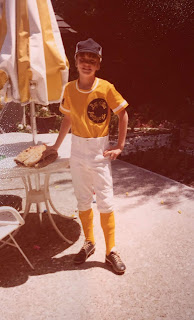This week is officially "Nurses and Hospitals Week." Usually it is celebrated at the hospital with banners, a barbecue and other festivities. Obviously, group gatherings are not appropriate right now but some sort of gesture would be nice, especially to the ones who have been on the front lines of this pandemic. Instead, a systems wide email was sent to all BJC employees from our CEO stating that furloughs would be instituted, hiring is being frozen, construction projects will be halted, retirement matching plans will not be contributed to and executive salaries will be cut. It is the harsh reality that the very industry involved in taking care of the sickest of this pandemic is feeling the financial hurt as hard as other commercial industries. To the credit of our CEO, he absolutely acknowledged the poor timing of this announcement. I also credit him for sending the email and signing his own name to it. He easily could have hid behind "an executive committee" decision as so many do.
Our system is certainly not unique across the nation. A recent
Washington Post article outlines in detail how health systems are struggling and the effect this has on the economy as a whole. Two large factors have been put into play:
1.
Cessation of nonessential medical care. Most systems put a halt to elective procedures and services. If a surgery can be put off a few months, it is being put off. Therapy services are curtailed for all but the most important issues. Dentists have been hit especially hard, having to cancel all but urgent cases. For myself, much of what I do lies in prevention. We are not seeing patients for their annual exams. Routine follow up of stable conditions such as high blood pressure or diabetes is delayed or done through telemedicine visits. Our ability to see patients using technology is great but it is a fraction of what we would normally be doing.
2.
Fear of contagion. Patients do not want to access the healthcare system right now for obvious reasons. They do not want to be placed in close proximity to those taking care of the sickest patients. Anxiety is a powerful motivating stimulus. During normal times, the fear of certain symptoms will drive people to come see me for further evaluation. During the pandemic, the fear of contagion is higher than the fear of these symptoms. This can be especially dangerous if serious conditions such as heart failure, heart attack, stroke or other serious diseases are delayed.
I do not cast judgement on either of these factors. They are both very appropriate under the current situation. It is the reality in which we must function. For myself, I get paid looking back twelve months on the work that I have done and that is recalculated every three months. My salary right now has not dropped but as time goes on it most certainly will and it will stay that way for well over a year. I have much to be thankful for. Being a primary care physician who can practice telemedicine and see urgent patients, my job is safe and always will be. My heart aches for those who will lose their job. It is expected that 20% of those in my office will be affected.
The key for my industry as well as all others in our economy is how we open up services in such a way as to maximize health and safety of patients as well as ourselves and our staff. It will require thinking about how we deliver care in new ways. It will also require a step wise approach. Our medical group has proposed three phases of retuning to productivity. The first phase is starting now. We have essentially removed all the chairs in the waiting room. Patients will be registered possibly remotely. When a patient comes to the office they will remain in their car until they are called up. They are screened when they enter the building to make sure they do not have a fever or symptoms that are suggestive of COVID-19. When they enter the office, they will be taken back to the exam room immediately. Both staff and patients are wearing masks and we make sure they leave out a side door to minimize contact with anyone coming in.
The efficiency in which we see patients is decreased but can be supplemented by the ongoing use of telemedicine as well. We'll need to continuously evaluate our process and make changes as needed. It has been a very collaborative process in my office. I am encouraged by the willingness of everyone to pitch in and help out. I am blessed to work with an amazing group of people. In the meantime there are too many whose livelihood have now been placed in jeopardy through no fault of their own. I am grateful for governmental, community, religious and familial safety nets. We must all be on the look out for those who need our help and do what we can.
Last night I was on a roof cleaning out the gutters for a dear friend who lost her husband a few weeks ago. Once a month in our church we have the opportunity to give an offering to help those who have fallen on hard times. With me last night was a man who had received this type of help for his rent. He and his wife were more than happy to give their help to this widow in return. It was a beautiful example of a community taking care of each other. To get through this we'll need to see and do more of this in all areas. Coming together, we are stronger than any of us alone.









